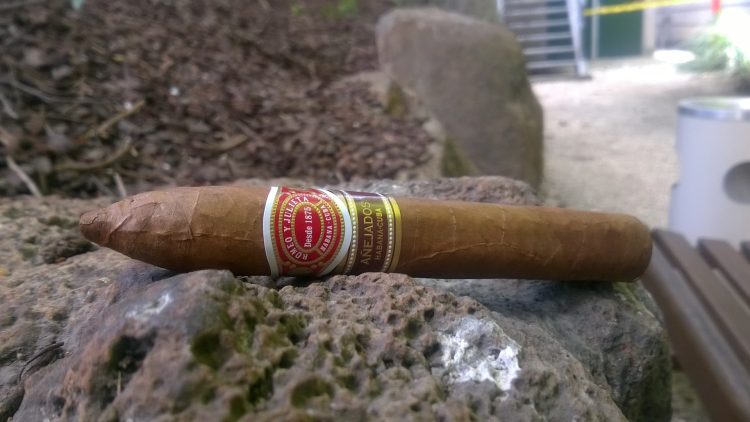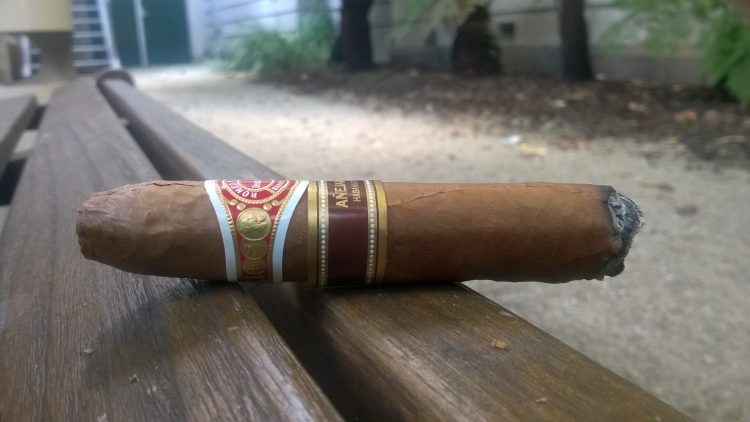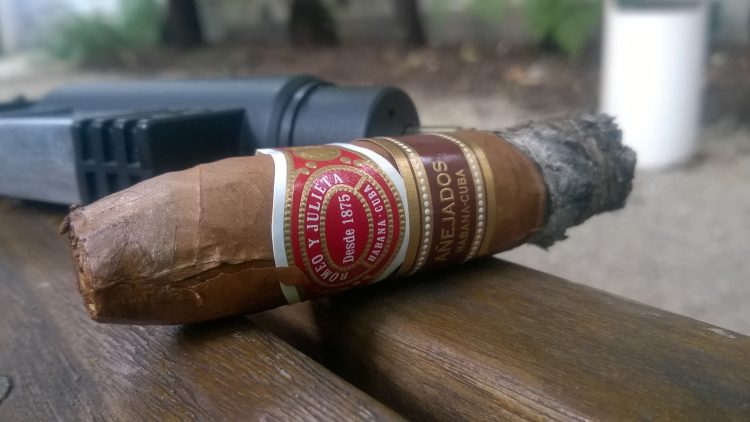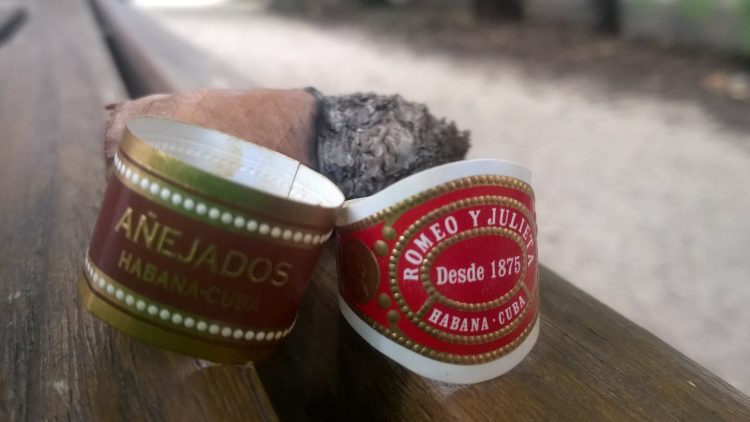One of the great rituals of our hobby is the herf, the coming together of cigar smokers to indulge their raison d’etre. In the modern day they are organised online, on forums and chat-groups. I’ve been to many over the years, and I used to fret before I attended one; “what will I talk about with these strangers,” I would wonder, “strangers with ages up to four decades distant from my own?” Now an old hand, I know the answer. At every herf the attendees instantly find common ground in two subjects: taxes and the nanny state. Specifically, how the nanny state draws ever closer; whichever local law has recently come into effect, or whatever venue that once allowed smoking no longer does.
Well, today, that venue is my own home. I live in a complex of around 300 apartments, a heritage building that straddles most of a city block, and has a pleasant courtyard in the centre. Shaded by large trees, the courtyard gets too little light for grass, and has gravel instead. The gravel makes it not much good for children to run about in, or for picnics, and the trees shade it too much for sunbathers. It is, therefore, the singular domain of one group of liches: the smokers.
But not today. The nanny state has intervened! The body corporate committee has a member whose windows open directly onto the courtyard, and she has little appreciation for the aromas of delicate Cuban leaf that waft into her lounge-room on warm summer days. Justified by a dubious interpretation of some legislation about smoking around swimming pools, the committee has decreed that smoking in the courtyards shall be banned, and exiled us to a desolate laneway underneath the carpark access bridge. The ruling is universally disobeyed, but, not being the law-breaking type, I decided to check the smoking area out. It’s not so bad – fairly sheltered, and there are ferns, seats, and ashtrays provided.
It’s a ghastly day: 35 degrees, overcast and windy, so I have selected a cigar that I expect to sink comfortably to the bottom of the pack: the Romeo y Julieta Pirámides Habanos Añejados 2014.
Finding a sheltered spot in the lee of a concrete support column, I examine the thing. It definitely is aged, with a fragile wrapper, and pronounced box-pressing. I set it alight, and all things considered it begins pretty well; very light, toasted tobacco, with a hint of butter and a slight nutty, floral back to it.
The reason for my scepticism about the Añejados Pirámides, and the Añejados cigars more generally, is that their release was so unusual. Typically, when a new cigar comes out, it is first announced in a provisional list circulated to distributors in June or July. These always leak, and are variously confirmed or denied by insiders until the Habanos Festival in February of the next year, when the complete cigar programme for the year is officially announced, and pre-release samples are handed around. The cigars begin to appear in stores from July of that year onwards (although sometimes they can take up to two years before they are widely available).
The inaugural Añejados series came out of nowhere: it was announced in November, and was in stores three weeks later. Supposedly these are regular production cigars, aged in their boxes for five to eight years in Cuba, which means that this programme must have been well underway since at least 2008, with little or no word making it to the cigar aficionado community. How did they keep it under wraps that long? Aficionados, your host included, speculated that the whole thing was a ruse, that someone had simply found a cache of unsold Pirámides (discontinued 2003, these were an unexceptional cigar at the best of times, and hit new lows in the early 2000s), sitting at the back of a warehouse somewhere and decided to slap on a fancy band and release them at a premium. Even more suspicious were the Montecristo Churchills released at the same time, as the Churchill is not a size found in the regular production of Montecristo, implying that the found cache was probably of Sancho Panza Churchills or some another similarly unpopular marque, and Habanos figured that re-banding them as Monte might make them sell better.
All that said, this one aint so bad. At the mid-point it is still very light, floral and sweet. Burn is good. To be honest, this is an excellent cigar, and wears its age gracefully: the punchiness is gone, but an elegance has emerged.
As I smoke my cigar under the parking lot bridge, a fellow resident wanders out, well known to me as the building agitator. Once upon a time he ran this place, and he has enough votes in his pocket that he could again, but he has one small problem: over the years he has made a lot of enemies. He has enough votes to decide the committee if it comes to an election, but for it to come to an election there needs to be more nominations than there are seats, and he’s short on friendly nominations. In the smoking area we make a deal: I’ll run for committee if he helps me get smoking back into the courtyards. Stay tuned, gentle reader, the election is only a few weeks away, and the nanny may be seen off yet.
After the bands come off there is a momentary, sickly sweet note of sarsaparilla or fairy floss before it goes downhill fast, bitter, a bit chemical, dirty. All I have to drink is a tepid flask of water that I brought down for the rinse, and it does not help at all. I wince and spit my way through the final inch.
All in all, the Añejados Pirámides is a very decent smoke. Better than the Petit Coronas any day of the week.
Romeo y Julieta Pirámides Habanos Añejados 2014 on the Cuban Cigar Website



